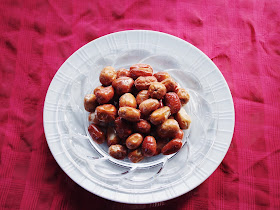Nowruz, which means "new day" in Persian, marks the arrival of spring, nature's renewal, and the beginning of the new year. This year, sal-e tahvil (vernal equinox) falls on Wednesday, March 20, at 5:58 pm here in New York.
This ancient festival, with roots dating back thousands of years, is celebrated not only in Iran but also by Iranians around the world, as well as in countries such as Azerbaijan, Afghanistan, Kazakhstan, Turkmenistan, and Uzbekistan. Nowruz is a time of togetherness with family and friends, sitting around a sofreh-ye haft seen, feeling gratitude for the year past, and looking forward with hope to what lies ahead.
Traditions continue throughout the 13 days of Nowruz. Following the Nowruz celebration, the traditional did-o-bazdid (visiting friends and family) starts, and the festivities end on the 13th day of Nowruz, which is called sizdah- bedar (getting rid of 13). This day is traditionally spent outdoors, picnicking in nature. On this day, sabzeh is released into running water, carrying away any negativity and misfortune from the home.
Preparation for Nowruz begins weeks earlier with khaneh tekani (spring cleaning), clearing away dust and clutter to welcome renewal. A guiding Zoroastrian teaching remembered during this time is beautifully simple: Good Thoughts, Good Words, Good Deeds.
At the heart of Nowruz is the haft-Seen table (haft=seven, seen=the letter "s" in Farsi). Each of these items starts with "s" and carries a symbolic meaning:
Preparation for Nowruz begins weeks earlier with khaneh tekani (spring cleaning), clearing away dust and clutter to welcome renewal. A guiding Zoroastrian teaching remembered during this time is beautifully simple: Good Thoughts, Good Words, Good Deeds.
At the heart of Nowruz is the haft-Seen table (haft=seven, seen=the letter "s" in Farsi). Each of these items starts with "s" and carries a symbolic meaning:
سبزه Sabzeh - wheat, lentil, or mung sprouts need to be germinated a couple of weeks before the sal-e tahvil to have a long and green sabzeh.
- Sabzeh (sprouts) - rebirth and renewal
- Samanoo (wheat pudding) - patience
- Seeb (apple) - beauty
- Seer (garlic) - health
- Sekeh (coin) - prosperity
- Senjed (oleaster) - love
- Serkeh (vinegar) - age
In addition to these seven items, other items often included are a mirror (reflection), candles (light), goldfish (life), sumac (the spice of life), colored eggs (fertility), and a book of poetry by Hafez, or a prayer book. sweets, sonbol (hyacinth), and other spring flowers.
The Nowruz feast often includes sabzi polow (rice and herbs) with mahi (fish), reshteh polow, kookoo sabzi, ash reshteh, and dolmeh, among many other dishes that might differ from region to region.
Sal-e No Mobarak! Happy Nowruz!
The Nowruz feast often includes sabzi polow (rice and herbs) with mahi (fish), reshteh polow, kookoo sabzi, ash reshteh, and dolmeh, among many other dishes that might differ from region to region.
Sal-e No Mobarak! Happy Nowruz!











nowrooz mobarak
ReplyDeleteHappy Nowruz!
DeleteHappy Nowruz! I just finished baking two batches of your recipe for Cake Yazdi to share with my high school students tomorrow as we learn about Nowruz. They've read the comic memoir Persepolis and learned some about Iran's culture and history, so now we'll have a taste. Thank you for your lovely blog and sharing your recipes and photos with us.
ReplyDeleteThank you and Happy Nowruz to you too!
Delete